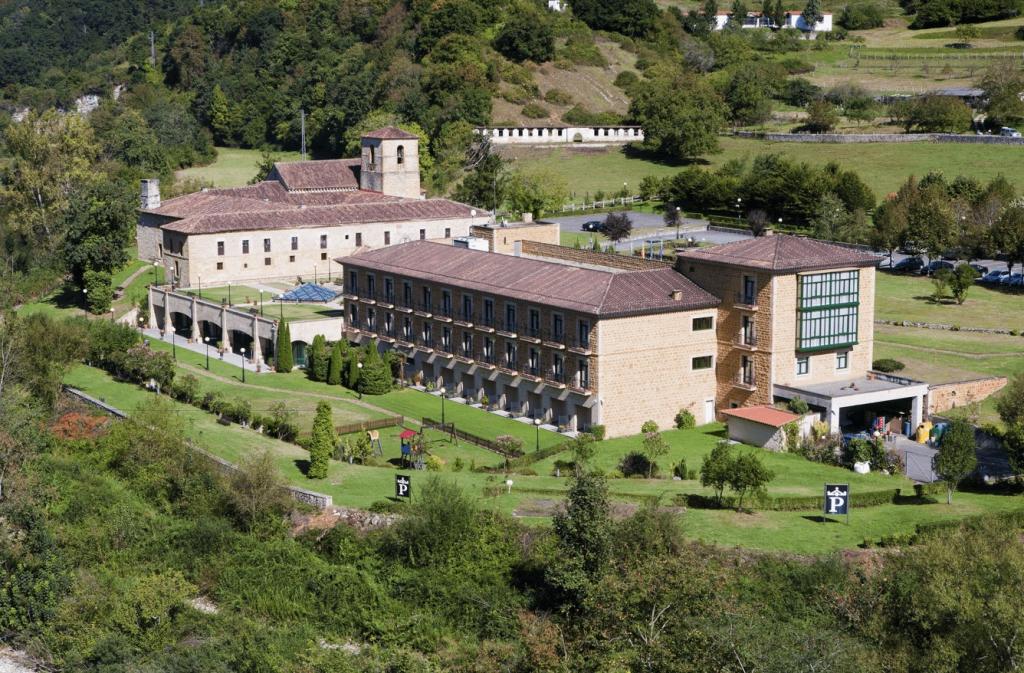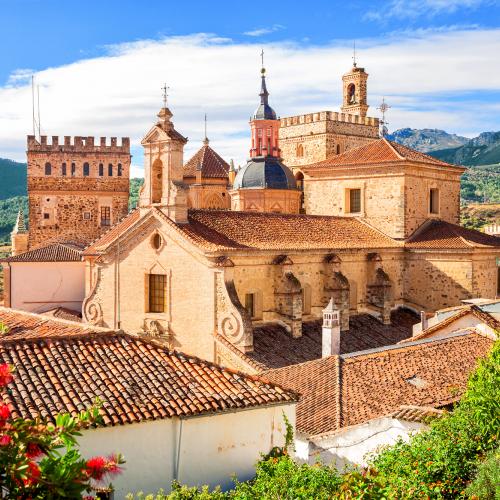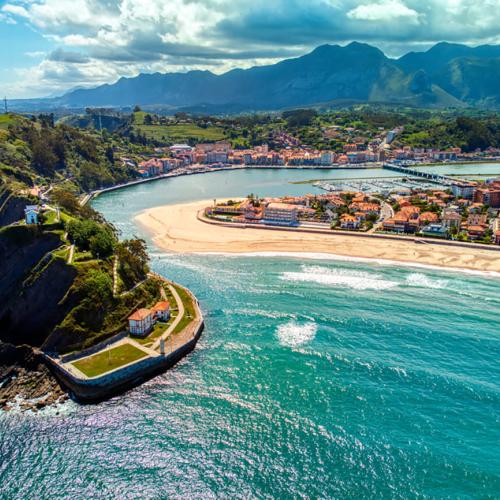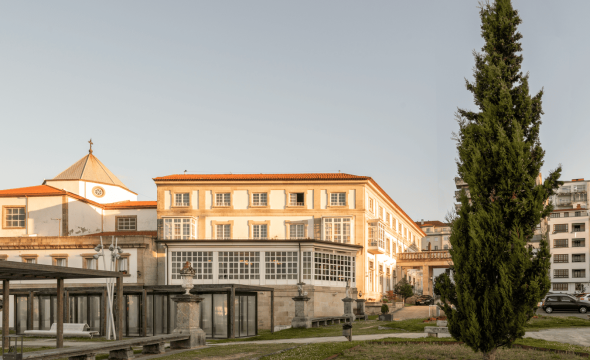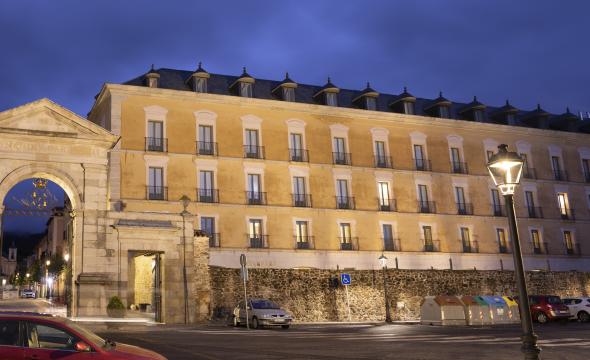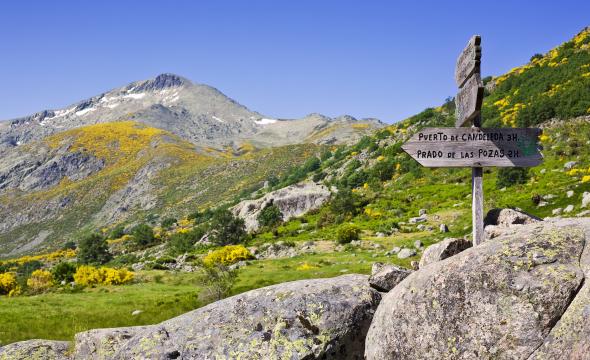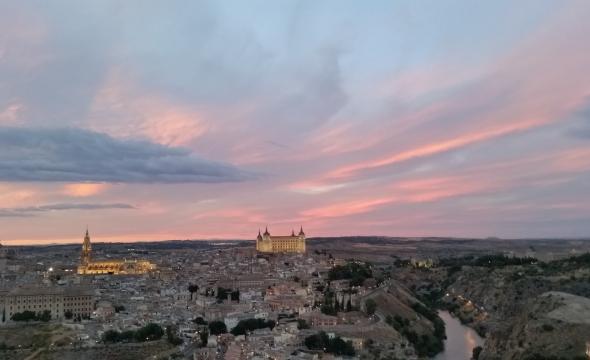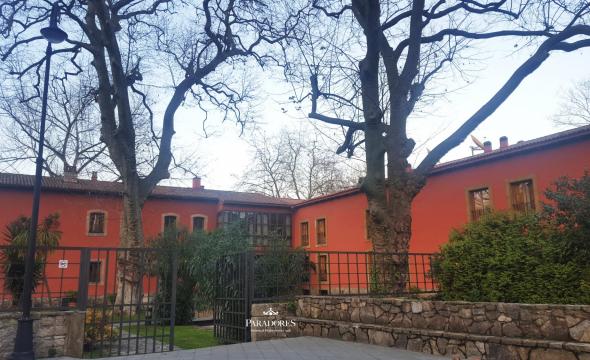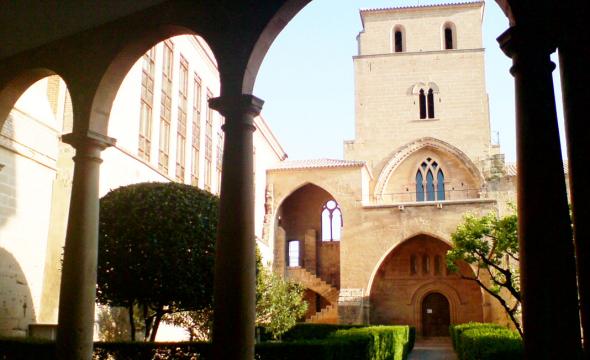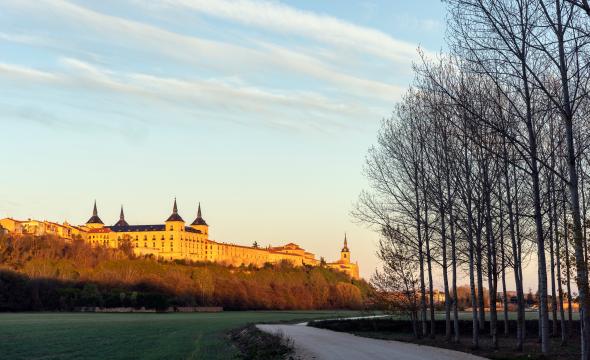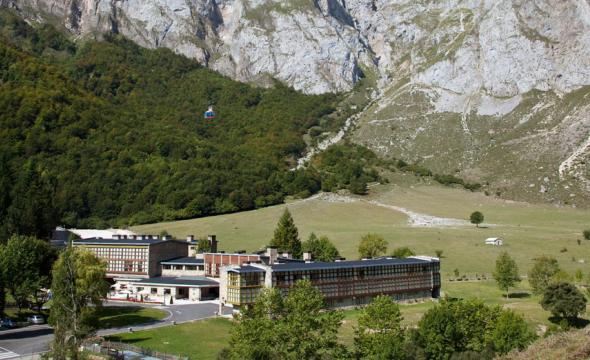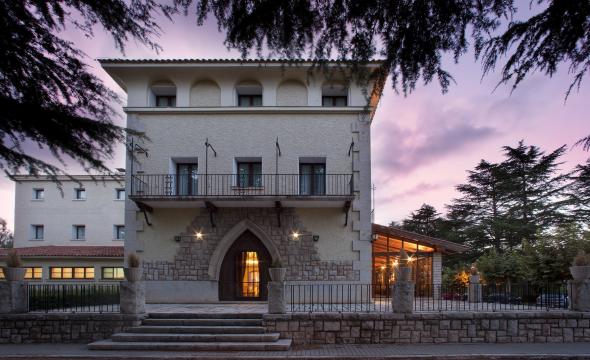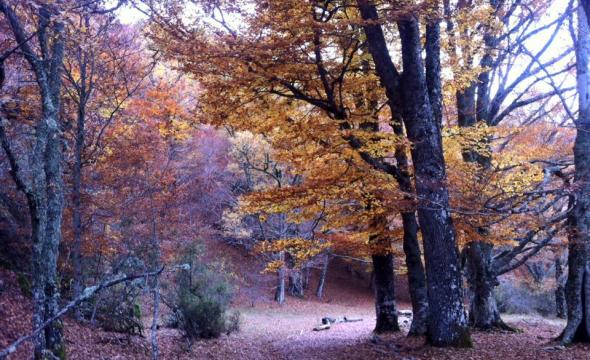In Spain, we pride ourselves on having countless charming medieval villages. Over the centuries, their essence has aged exceptionally well, allowing a stroll through their mythical narrow cobbled streets, among humble wooden and stone buildings, to be a journey into the past and explore the beauty of the Middle Ages. And what better way to immerse yourself in this experience than through Paradors. Did you know that some of our buildings were built during the Middle Ages? In fact, the decoration and gastronomy of our restaurants invite you to relive this historical period through all five senses.
Medieval Paradores for reliving history
A FORTRESS REMINISCENT OF MEDIEVAL FINDS
The Galician Parador of Baiona, located in the 12th century Monterreal Castle, is an essential stop to remember this historical period. When you set foot here, its sturdy walls, immense gardens and towers bring to the present a whole era of splendour. The 'Prince's Tower' of the fortress was the first place in Europe to see the return of 'La Pinta'. Beyond our Parador, the old town is a good place to relive past times while walking through its ancient streets. In addition, Baiona celebrates every year the Fiesta de la Arribada to commemorate the discovery of America, an event where medieval knights, craftsmen and stilt walkers evoke the best of that period.
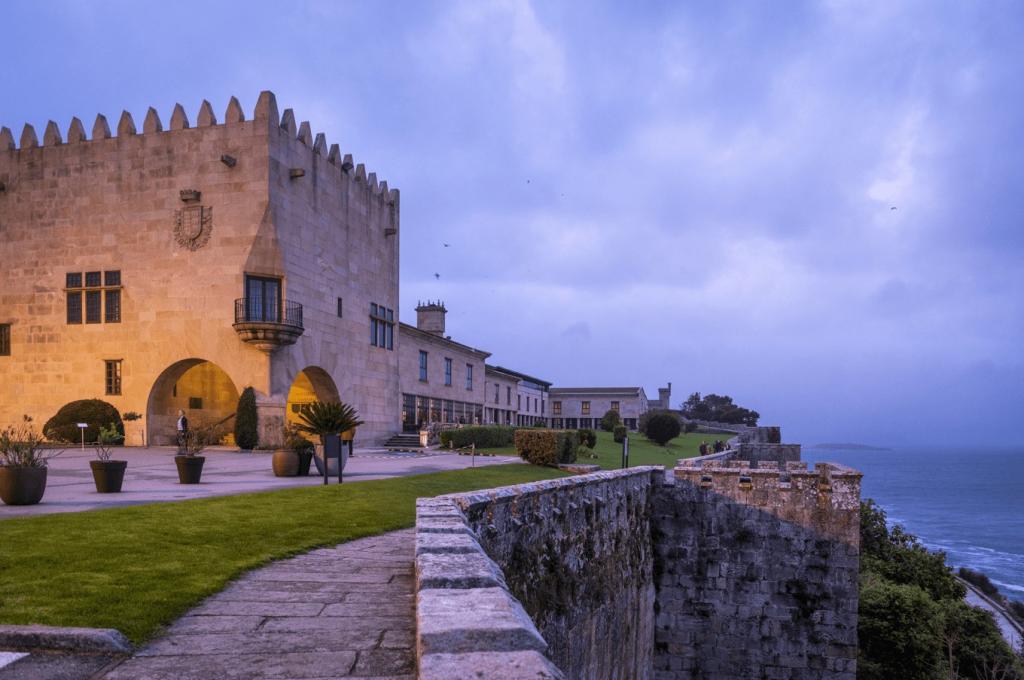
I WANT TO BOOK AT THE PARADOR DE BAIONA
A PARADOR THAT WAS ONCE THE RESIDENCE OF IMPORTANT FEUDAL LORDS
In the province of Toledo is the Parador de Oropesa, a former citadel dating from the 11th and 12th centuries. Its parade ground, its Mudejar coffered ceilings, the metal armour, the palatial staircases and its magnificent 25-metre-high keep are all elements that will help you relive the times of the ancient and powerful noble houses. The castle was the residence of the Álvarez de Toledo family, one of the most important feudal families of the time. Thanks to the strength of its walls, the Parador de Oropesa was key to the defence of the town and, in later years, the descendants of Alfonso X the Wise turned it into a powerful commercial and cultural centre. Don't miss the Medieval Festivities of Oropesa, which take place in April. The streets are filled with stalls, performances, music, workshops and theatrical performances by jugglers, acrobats and other period characters.
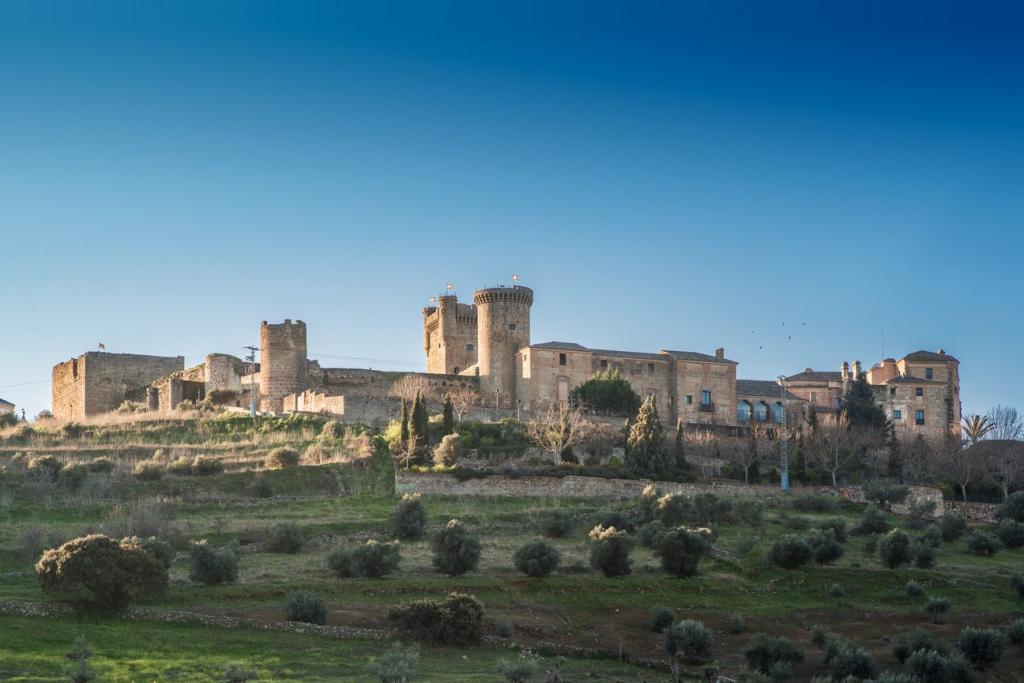
I WANT TO BOOK AT THE PARADOR DE OROPESA
A CASTLE WITH MEDIEVAL ROOMS CONVERTED INTO A PARADOR
80 kilometres from Guadalajara, the Parador de Sigüenza is one of the best-preserved castles of the Middle Ages. Kings, cardinals and bishops resided in this 12th-century fortress built on the site of an Arab citadel. The cobbled courtyard, the rooms with wooden balconies, the Romanesque chapel and the vaulted dining room will make you feel like a real feudal lord. Sunset is the best time to explore the village. The reddish tones dress the medieval streets and other monuments representative of the period with a special charm, for example, the Cathedral of Santa María, where the Doncel of Sigüenza rests, or the fascinating Plaza Mayor, full of arcades and impregnable arches.
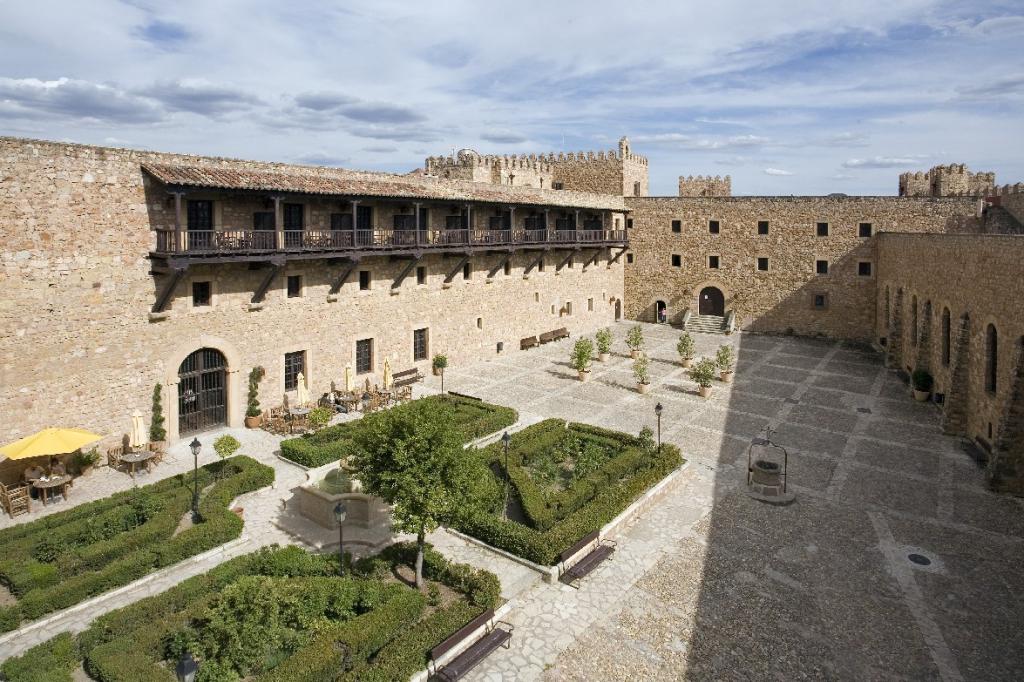
I WANT TO BOOK AT THE PARADOR DE SIGÜENZA
Medieval villages you must visit
LERMA: ONE OF THE BEST CONSERVED
Lerma, just a few minutes from Burgos, is one of the towns that has best preserved the essence of the Middle Ages. At the entrance to the town centre you will be greeted by the Arco de la Cárcel, the only remnant of the medieval wall that is still standing. After crossing its sturdy walls, you will walk under the watchful eye of the small houses of that period, characterised by the austerity of their materials, mainly adobe, wood or mortar. In the heart of the medieval centre, the arcaded Plaza Mayor, the Parador de Lerma awaits you. From the rooms there are spectacular views of the historic centre and here, the excellence of the roasts and the D.O. Arlanza wine are served. The Parador is a beautiful Renaissance palace built by the Duke of Lerma to showcase his political power and to serve as a recreational abode for the monarch Philip V.

I WANT TO BOOK AT THE PARADOR DE LERMA
PEÑÍSCOLA: BETWEEN COAST AND MEDIEVAL ART
Peñíscola, as well as being a coastal town, is a real medieval treasure. Located on the Costa del Azahar, its imposing castle is the main vestige of this period. With a style that combines Romanesque and Gothic elements, the fortress houses numerous medieval outbuildings, including a vestibule, stables, the guardhouse, a dungeon and the room that was occupied by the pontiff who owned the complex, Pope Luna. But that's not all, the artillery gardens and cobbled streets of the town are also a must to immerse yourself in the beauty of the medieval era. Just seven kilometres away, the Parador de Benicarló offers a peaceful retreat with large, well-kept green areas where you can enjoy unbeatable views of the beach during your getaway.

I WANT TO BOOK AT THE PARADOR DE BENICARLÓ
CANGAS DE ONÍS: EPICENTRE OF MEDIEVAL ROMANESQUE ART
Cangas de Onís is a unique enclave for reliving the times of the Christian Reconquest during the Middle Ages. Among the remains not to be missed is the Puente Viejo (Old Bridge), an emblematic structure that formed part of the main road network connecting the main kingdoms of Spain. The Asturian town is also an important example of Romanesque art, with the monastery of San Pedro de Villanueva standing out. Its façade is particularly impressive, thanks to its decoration with vegetal details. Next to the religious building is the Parador de Cangas de Onís, a cosy refuge with stone and wood rooms, sheltered by the majestic Picos de Europa.
